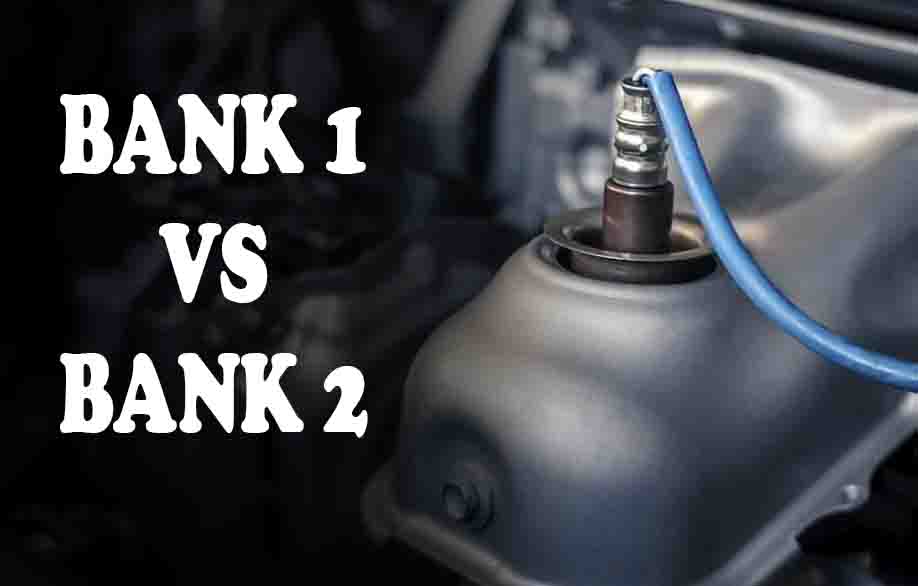When reading a trouble code with a scanner, it can sometimes be difficult to determine what the trouble code is referring to. In this post, we will explain what bank 1 and bank 2 are and what you need to know about them.
How do you decide which O2 sensor or ignition coil to replace if you’re having trouble figuring it out?
You are not the only one going through this! A diagnostic scanner is a useful tool for troubleshooting the problems associated with your car. However, sometimes it may not always be as easy as pointing at the codes on the scanner to determine what they actually mean.
In particular, if you get a trouble code in which the last sentence of the trouble code data refers to bank 1 or bank 2, sensor 1 or sensor 2 as a part of the trouble code data, you should pay attention to this. However, the process is actually not that difficult at all! I would like to understand what this means, so let’s take a look at it!
Most often, when we talk about the banks of an engine, it refers to the sides of the engine, but that is not quite the same as referring to the left or right side of a machine.
In different cars, there will be a different location for the bank 1 as well as the bank 2 of the battery. The only thing they all seem to share is that the first cylinder is always located on the “side” of the engine, which are all referred to as the “side” of the engine.

This article is going to guide you through the process of correctly identifying bank 1 and bank 2 on any car model, so please stick with me. In addition, we will be looking at how to locate the O2 sensors as well.
Table of Contents
What is Bank 1 vs Bank 2?
Bank 1 refers to the left side of the engine, while bank 2 refers to the right side of the engine. On the side of the engine with cylinder 1, bank 1 is located. The bank 2 is the side of the engine with the second cylinder. The most common place for Bank 1 to be found is towards the front of the car, if the engine is in a transverse position.
A good place to start is checking your car’s repair manual for information on which cylinder bank to use for your vehicle. In addition, you can also look for any stamps that may be on the cylinder block or head that might contain the number of the cylinder.
There is a pulley on the crankshaft on the front of the engine, which is located on the front of the engine. There is no front of the engine on the side closest to the front of the vehicle.
A simple explanation of how the bank 1 is placed on the driver’s side of the engine would not suffice because, depending on the engine, cylinder 1 might be located on another side. There are different sides of the road across the world, so it’s a little confusing to guess which side of the road bank 1 or bank 2 is on.
- There are two banks, bank 1 is the side with the cylinder number 1 (Cylinders 1 – 3 – 5 – 7 and so on.)
- In Bank 2, the cylinders 2 – 4 – 6 – 8 are located. In Bank 1, the cylinders 1 – 8 are located.
What is Sensor 1 & 2?
There is a sensor number on the exhaust system that tells us the location of either the oxygen sensors (O2 sensors) or the exhaust temperature sensors (ETT sensors).
First, there is a sensor located nearest to the engine, and the last one is located further in the exhaust system behind the engine.
As a general rule, if we are talking about O2 sensors, the following should be considered:
- Sensor 1 = Front of the catalytic converter before the catalytic converter (Upstream O2 sensor)
- Sensor 2= This sensor is located after the catalytic converter on the rear (downstream O2 sensor)
In some diesel engines, the exhaust temperature can be measured by many different sensors, and the engine can use sensors 1, 2, 3, 4, etc. This is a case in which sensor 1 is located closest to the engine, and sensor 2 is located at the back of the exhaust system.
Conclusion – Bank & Sensor
The Bank 1 Sensor 1 is the first sensor that is closest to the engine in the bank. If it is on Bank 1, it means that it is on the engine side of the engine with cylinders 1, 3, 5, 7, etc.
This is known as Bank 1 Sensor 2. It is located on the exhaust pipe of the engine under the catalytic converter, usually behind the catalytic converter itself. As it is on Bank 1 it means that it is located on the engine side with cylinders 1, 3, 5, 7 etc.
In Bank 2, Sensor 1 is the first sensor that is closest to the engine. As far as Bank 2 is concerned, it is on the side of the engine with cylinders 2, 4, 6, 8, etc.
There are two sensors on the engine’s exhaust pipe, which are usually located behind the catalytic converter in bank 2, sensor 2. As an example, if the bank 2 has cylinders 2, 4, 6, 8, etc., it means it is on the engine side.
Bank & Sensor FAQs
It is commonly found that the sensors in bank 1 and bank 2 are identical in most cases. In spite of this, this completely depends on the vehicle model we are talking about, as well as the type of sensor we are using. For more information regarding the right answer for your specific car model, you can consult a repair manual or ask a dealer.
As far as I know, bank 1 refers to the side of the engine on which cylinder 1 is located. There is no doubt that bank 1 is often located on the driver’s side of the vehicle, although it is not something you should follow blindly. The only thing you will accomplish if you use this method instead of verifying it properly is that you will waste your own money.
Even if your engine is transversely mounted, the bank does not have anything to do with where it is located, be it at the front or the back. There is a bank 1 and a bank 2 when it comes to the number of cylinders in the engine, bank 1 having one and bank 2 having two. A front O2 sensor, a rear O2 sensor, or a combination of both is what tells us if it’s the front or rear sensor.
It doesn’t matter if Bank 1 or Bank 2 is located on the exhaust or intake side of the engine, so it all depends on the engine you have. This is the side of the engine that has cylinder 1 and this is the side of the engine that has cylinder 2.
